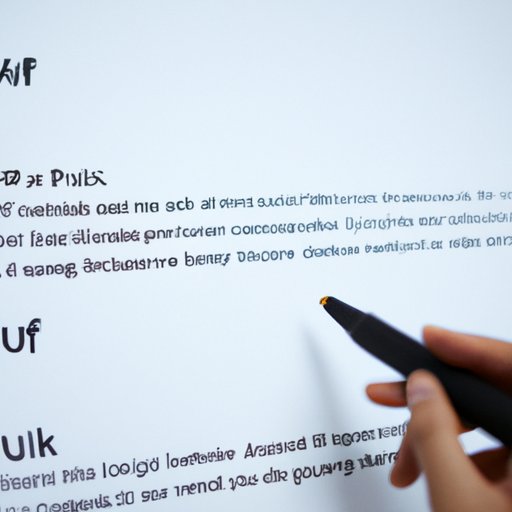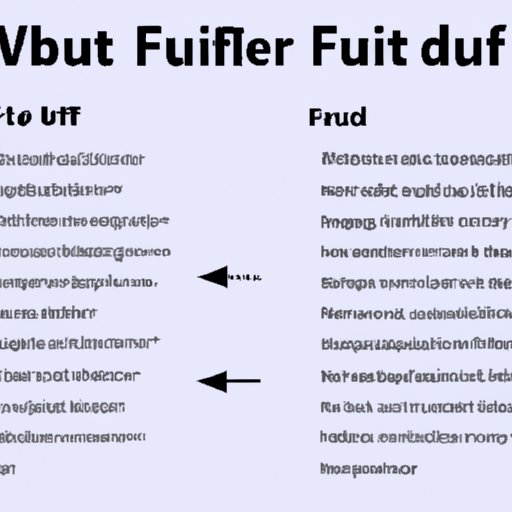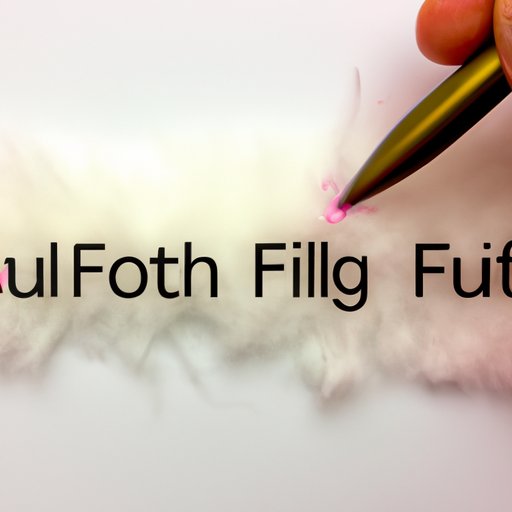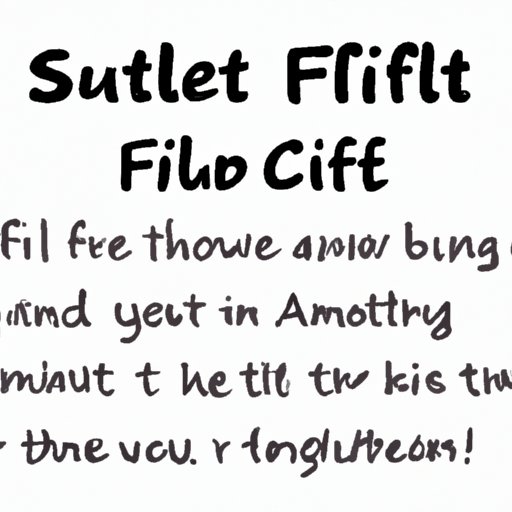Introduction
Fluff writing is a common problem among writers. It can make content sound more interesting, but it often detracts from the quality of the work. This article will explore what is fluff in writing, why writers use it, how to identify and avoid it, and the consequences of using fluff in writing.
Exploring the Definition of Fluff Writing
Fluff writing is defined as content that is long-winded and does not add any value to the overall message. It is often used to fill space or make content seem more interesting, but it can actually detract from the quality of the work. Fluff includes phrases such as “in conclusion,” “to sum up,” and other unnecessary words or phrases that do not add to the meaning of the content.

Analyzing Examples of Fluff Writing
Fluff writing can take many forms, such as overly descriptive passages, flowery language, and redundant statements. For example, a writer may use the phrase “it is important to note that” when they could simply say “note that.” Another example is using the phrase “at this point in time” instead of simply saying “now.” These kinds of phrases are considered fluff and should be avoided.

Understanding How to Avoid Using Fluff in Writing
The best way to avoid using fluff in writing is to be aware of it and be conscious of using it. Writers should read their work aloud to themselves to identify any unnecessary words or phrases. They should also look for ways to simplify sentences and paragraphs by removing any fluff. Additionally, writers should strive to use clear, concise language that gets to the point quickly.

Examining the Consequences of Using Fluff in Writing
Using too much fluff in writing can have negative consequences. It can detract from the quality of the work and make it difficult for readers to follow the writer’s argument. Additionally, it can cause readers to lose interest in the content due to its lack of clarity and focus.
Comparing and Contrasting Fluff Writing with Effective Writing
In contrast to fluff writing, effective writing is direct and to the point. It uses clear, concise language that gets straight to the point without any unnecessary words or phrases. Furthermore, effective writing avoids using flowery language, overly descriptive passages, and redundant statements.
Investigating the Strategies for Identifying Fluff Writing
There are several techniques that writers can use to identify and eliminate fluff in their writing. The first step is to read the content aloud to oneself. This can help writers identify any unnecessary words or phrases. Additionally, writers should look for ways to simplify sentences and paragraphs by removing any fluff. Finally, writers should strive to use clear, concise language that gets to the point quickly.
Conclusion
In conclusion, fluff writing is a common problem among writers. It can make content sound more interesting, but it often detracts from the quality of the work. By understanding what is fluff in writing, why writers use it, how to identify and avoid it, and the consequences of using fluff in writing, writers can create higher quality content that is clear, concise, and to the point.
(Note: Is this article not meeting your expectations? Do you have knowledge or insights to share? Unlock new opportunities and expand your reach by joining our authors team. Click Registration to join us and share your expertise with our readers.)
